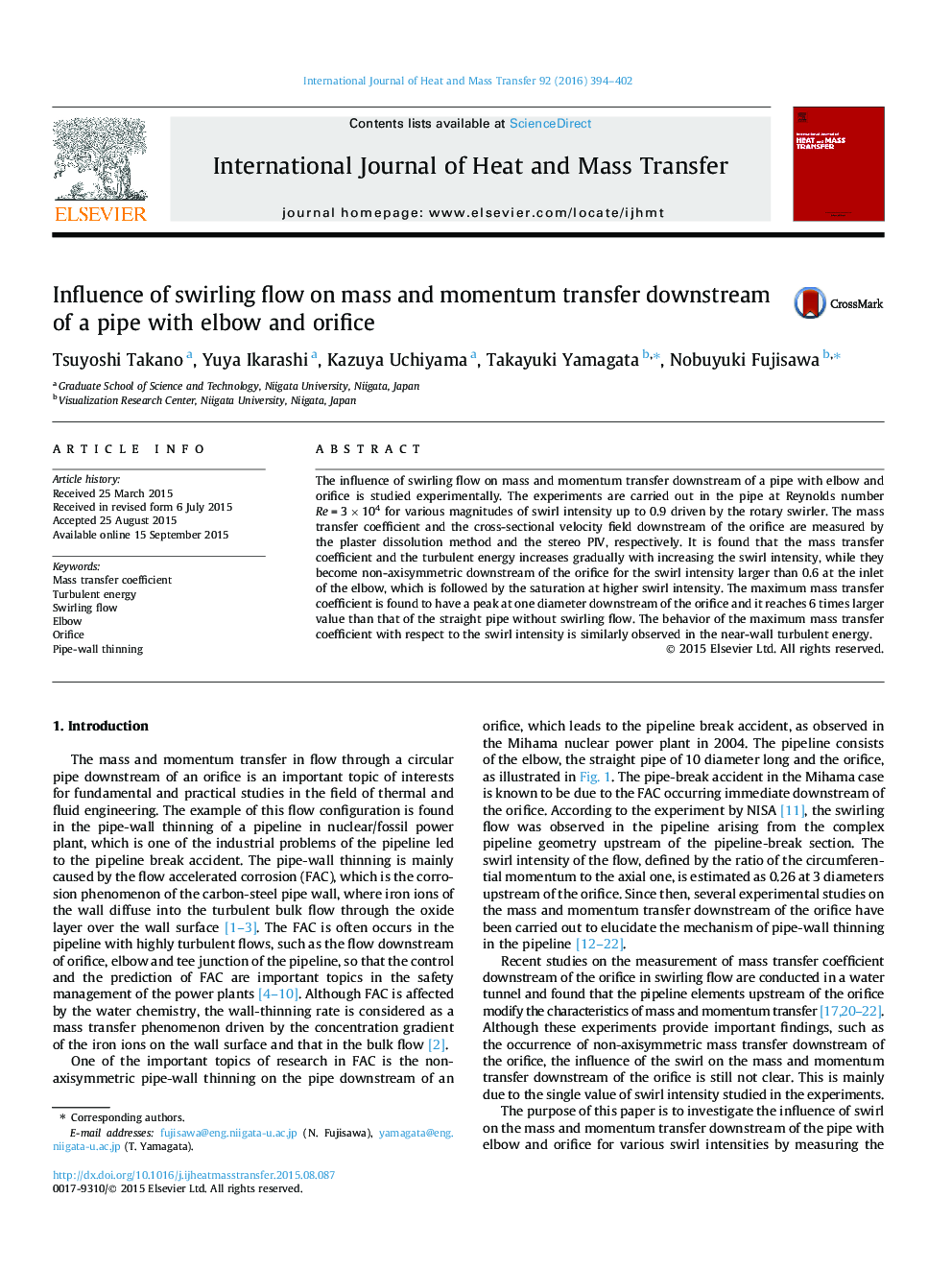| Article ID | Journal | Published Year | Pages | File Type |
|---|---|---|---|---|
| 656546 | International Journal of Heat and Mass Transfer | 2016 | 9 Pages |
Abstract
The influence of swirling flow on mass and momentum transfer downstream of a pipe with elbow and orifice is studied experimentally. The experiments are carried out in the pipe at Reynolds number Re = 3 Ã 104 for various magnitudes of swirl intensity up to 0.9 driven by the rotary swirler. The mass transfer coefficient and the cross-sectional velocity field downstream of the orifice are measured by the plaster dissolution method and the stereo PIV, respectively. It is found that the mass transfer coefficient and the turbulent energy increases gradually with increasing the swirl intensity, while they become non-axisymmetric downstream of the orifice for the swirl intensity larger than 0.6 at the inlet of the elbow, which is followed by the saturation at higher swirl intensity. The maximum mass transfer coefficient is found to have a peak at one diameter downstream of the orifice and it reaches 6 times larger value than that of the straight pipe without swirling flow. The behavior of the maximum mass transfer coefficient with respect to the swirl intensity is similarly observed in the near-wall turbulent energy.
Related Topics
Physical Sciences and Engineering
Chemical Engineering
Fluid Flow and Transfer Processes
Authors
Tsuyoshi Takano, Yuya Ikarashi, Kazuya Uchiyama, Takayuki Yamagata, Nobuyuki Fujisawa,
